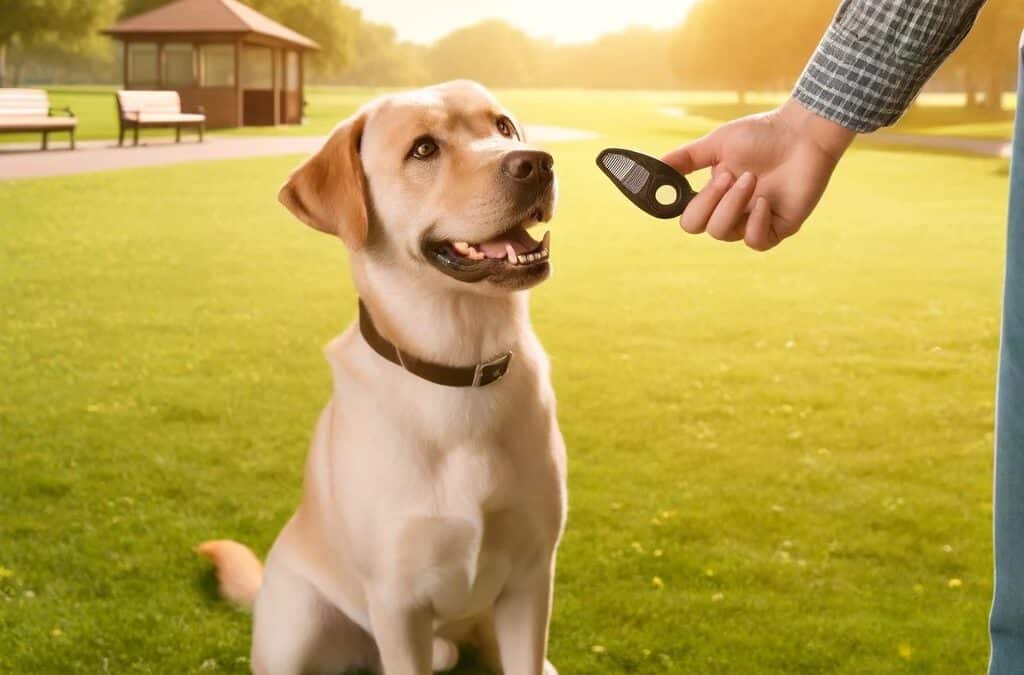What Behavior Modification Training For Dogs Is
The journey of behavior modification in dogs goes far beyond mere obedience. It’s about shaping their emotions and psychological makeup to interact with the world more positively. Traditional training might silence unwanted reactions, like fear-induced barking at loud noises, but behavior modification is about changing the dog’s actual feelings, employing techniques like positive reinforcement and desensitization.
At its heart, behavior modification uses learning theory principles to drive its processes. It’s a methodical approach that shifts a dog’s reaction from fear or aggression to calmness and contentment. Understanding why a dog acts a certain way is key to this transformative journey. It allows us to address the root cause of behaviors for lasting change, rather than applying a temporary fix.
This holistic approach is not the easy route; it’s a long-term investment in our dogs’ emotional and psychological health, strengthening our bond with them. It relies on encouraging desirable behaviors and reducing unwanted ones, but in a way that is sympathetic to a dog’s emotional state, creating a supportive and positive environment for them to thrive.
Counterconditioning and Desensitization: Two Pillars of Behavior Modification Training for Dogs
Let’s break down how behavior modification techniques like counterconditioning and desensitization can be practically applied. Counterconditioning is about creating positive associations. For instance, if a dog growls at the mail carrier, this technique would pair the mail carrier’s appearance with something the dog loves, like treats or a favorite game, gradually changing the dog’s emotional response from negative to positive.
Desensitization involves the gradual introduction of a stimulus that causes a negative reaction, but at a level that doesn’t provoke fear or aggression. Over time, with controlled exposure, the dog becomes desensitized to the stimulus. Think of it as reducing the intensity of a fear response, much like turning down the volume on a scary movie until it becomes background noise.
These methods are both powerful and require a great deal of patience and careful observation. The goal is to move at the dog’s pace, ensuring they are comfortable and receptive throughout the process.
Using real-life examples can help illustrate these concepts. For a dog showing aggression towards other dogs, desensitization might involve slowly introducing the aggressive dog to others at a safe distance, while counterconditioning rewards calm behavior. For a dog with a loud noise phobia, desensitization could start with playing thunderstorm recordings at a low volume and counterconditioning would pair this with positive reinforcement.
The end goal of behavior modification is creating a lasting change, reshaping the dog’s reactions for the better over the long term. It’s a deep, holistic process that forges a deeper bond between dogs and their pet parents. It’s a journey that requires patience, consistency, and a solid understanding of canine psychology.
Setting clear goals and creating a tailored plan are the starting points for behavior modification. Each dog is unique, so their training plan should reflect their individual behavior, personality, and past experiences. Gradual progression and a consistent schedule are key, as is the use of positive reinforcement to reward the behaviors you want to encourage.
Implementing the plan demands consistency in training methods and patience with the progress, which is often incremental. Continuously evaluate and adapt your methods; behavior modification is not a one-size-fits-all nor a linear process. It benefits from ongoing learning, adaptation, and, when needed, professional input, for example consulting with a dog behaviorist in Phoenix when looking for dog aggression behavior modification in Phoenix.
The journey through behavior modification is a spectrum of activities and strategies, all aimed at enhancing your dog’s well-being and your mutual happiness. It’s an ongoing relationship built through shared experiences, learning, and love, embracing patience, compassion, and curiosity.
The Role of Diet and Nutrition on Behavior Modification Training for Dogs
Now, let’s discuss the role of diet and nutrition in behavior modification. Just like in humans, a dog’s diet can greatly affect their mood and behavior. A balanced, high-quality diet can improve overall health and positively impact behavior. On the flip side, food sensitivities or deficiencies can manifest as behavioral issues. Ensuring your dog eats well can support their behavior modification journey.
Lastly, it’s important to celebrate every step forward in this process. Each improvement, no matter how small, is a step toward a more harmonious life with your canine companion. Embrace this journey with enthusiasm, and the bond between you and your dog will grow stronger and more rewarding with each passing day.
As we navigate the ongoing path of behavior modification, we can adapt to our dogs’ evolving needs, maintain their behavioral changes, and continue learning and growing together. Remember, the journey doesn’t have a definitive endpoint; rather, it’s about the continuous, loving relationship you build with your dog through patience, shared experiences, and commitment.
Continuing with the exploration of behavior modification, we come to the topic of setbacks and their role in this dynamic process. In any journey of learning, there will be moments of regression, and it’s important not to perceive these as failures, but rather as opportunities for deeper understanding and growth.
Setbacks as Opportunities
When a dog exhibits a setback, it’s a signal for pet guardians to reassess the situation. What has changed in the environment, routine, or the dog’s health that might be influencing this behavior? Adjustments to the behavior modification plan may be needed, which could include revisiting earlier successful strategies or introducing new ones.
Building resilience in your dog is crucial. Through positive reinforcement and creating a supportive learning environment, dogs can develop better coping mechanisms for stress and change, making them less likely to experience severe setbacks in the future.
Confidence Building
Confidence-building activities are key. Activities and games that promote problem-solving and autonomous decision-making can empower dogs, making them more self-assured and less reliant on constant guidance. This could include games that require them to figure out how to get a treat from a puzzle toy or navigate through an agility course.
Providing opportunities for safe exploration can also enhance a dog’s adaptability and confidence. Allowing dogs to safely explore new environments can give them a wealth of positive experiences and help them develop a sense of security even in unfamiliar settings.
Continuous Learning and Mental Stimulation
Continual education and mental stimulation are vital throughout a dog’s life. Just as humans need ongoing intellectual engagement, dogs also benefit from continuous learning. Introducing new commands, tricks, or even participation in dog sports can keep a dog’s mind active and engaged, helping to prevent boredom and associated behavioral issues.
Routine re-evaluation is another important aspect. As dogs age, their physical and mental needs change, and so too should their routine. Ensuring their routine meets their evolving needs is a key part of maintaining behavioral health.
Holistic Health and Well-being
Behavior modification is part of a holistic approach to a dog’s health, which includes nutrition, exercise, regular veterinary care, and stress management. A dog’s overall well-being is closely linked to their behavior, and any behavior modification plan should take this into account.
For example, physical exercise not only helps a dog burn off excess energy but can also be a time for practicing and reinforcing training commands, contributing to both physical fitness and behavioral health. Similarly, mental stimulation through training or problem-solving tasks can help manage anxiety and prevent stress-related behaviors.
Advanced Behavior Modification Training for Dogs
For some dogs, especially those that have mastered the basics, advanced training techniques can provide new challenges and enrich their learning experience. This might include advanced obedience classes, trick training, or specialized activities like scent work or search and rescue training.
The role of diet and nutrition in behavior modification is often overlooked. Just as with humans, what a dog eats can impact their mood and behavior. Providing a high-quality diet tailored to the dog’s individual needs, and addressing any food sensitivities or allergies, can make a significant difference in their behavior modification journey.
Lastly, engaging with a community, whether it’s through local training classes, online forums, or dog clubs, can provide invaluable support. Sharing experiences and advice can not only provide emotional support but also practical tips and new perspectives on training and behavior management.
In behavior modification, every small achievement is worth celebrating. Acknowledging progress, whether it’s mastering a new command or simply demonstrating a calmer demeanor in a previously stressful situation, reinforces the behavior and boosts both the dog’s and the pet guardian’s morale.
Behavior modification is a journey without a final destination. It’s a path of continual learning, adaptation, and growth that enhances the life of your dog and the relationship you share. By remaining patient, flexible, and committed, you can ensure this journey is as rewarding as possible for both you and your canine friend.
In the grand scheme of behavior modification, we recognize it as a living, breathing part of your relationship with your dog, evolving and adapting as both of you grow and change together. It’s about nurturing an environment where learned behaviors are not only practiced but become second nature in the tapestry of daily life.
Routine Reinforcement and Environmental Consistency
The consistency of routine and environment cannot be overstressed. These provide a foundation upon which your dog can build confidence and predictability. For instance, incorporating commands into daily activities like mealtime or play reinforces training in a way that feels natural to your dog.
Just as we thrive on routine, so do our canine companions. They look to us for cues about what to expect from the day, and when we embed behavioral expectations into our daily routines, we make it easier for them to meet those expectations.
Adapting to Change and Maintaining Progress
Change is inevitable, whether it’s a new home, a new family member, or a shift in your daily schedule. Introducing these changes to your dog gradually and with plenty of support helps them adapt without undue stress.
It’s also essential to continue practicing learned behaviors in various settings. This not only reinforces the behavior but also ensures that your dog understands that these behaviors are expected in any context, not just during training sessions.
Advanced Training and Continuous Improvement
For dogs that have mastered basic behavior modification, there’s always room for growth. Advanced training opportunities can offer mental stimulation and challenge that keep both the mind and body of your dog active and engaged. Whether it’s agility training, learning complex commands, or engaging in a new dog sport, these activities reinforce discipline and provide an outlet for energy.
Celebrating Milestones and Reflecting on Growth
Take the time to celebrate the milestones you and your dog achieve together. Each step forward, however small, is a victory and should be treated as such. Reflect on the progress made from where you started to where you are now—it can be incredibly fulfilling to see how far you’ve both come.
Preparing for the Unexpected
Training for unexpected situations is also part of maintaining behavior modification. Teaching emergency commands or ensuring your dog can cope with unexpected trips can be crucial in moments of stress or emergency.
Engagement and Support Networks
Lastly, engage with a support network. This might include local or online communities of dog owners, training classes, or even dog sports clubs. These networks can be a source of support, advice, and camaraderie as you continue on your journey of behavior modification.
As we conclude, remember that behavior modification is more than a training protocol; it’s a commitment to your dog’s lifelong well-being. It’s a journey you take together, continuously evolving and adapting to each other’s needs. Through it all, the love and respect you share with your canine companion will continue to grow, as will the joy and fulfillment you find in each other’s company.
Contact us if you are looking for help with dog training in Phoenix and surrounding cities.

